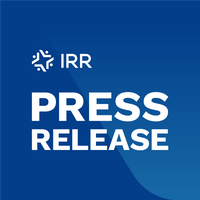
With its anaemic economic growth, rising debt, failing service delivery, high crime, and record-high unemployment, South Africa cannot afford another year of “business as usual”.
Finance Minister Enoch Godongwana is challenged to present a budget “that delivers what South Africans actually need”, says IRR researcher Anlu Keeve.
Keeve points out that South Africa’s debt surged to over R5 trillion, roughly 74% of Gross Domestic Product (GDP), in 2024. A decade ago, National Treasury promised to stabilise debt at 40% of GDP, but, since then, it has missed 13 revised targets.
“We need to see a concrete plan to rein in debt now, not in five years’ time,” says Keeve.
But stabilising debt is only half the battle. Growing social spending is placing an unsustainable demand for resources on the budget while economic growth remains weak. South African taxpayers cannot afford to sustain 28 million grant recipients. In 2023, for every 100 grant beneficiaries, only 62 people were employed – in 2001, 313 people were employed for every 100 grant recipients.
Much of this pressure comes from the 9.2 million people who receive the Social Relief of Distress (SRD) grant. An additional allocation to SRD spending can be expected following a Pretoria High Court ruling that Treasury must now adjust the SRD grant for inflation and adjust the income threshold for eligibility. Meanwhile, President Cyril Ramaphosa’s State of the Nation Adress (SONA) signalled an intention to make it permanent, expressed in the vague terms of making it “more sustainable”.
“We need to see a stronger commitment from government to allowing the private sector to drive job creation and a softer commitment to handouts,” says Keeve.
Moreover, since 2009, Transnet, Eskom, and other state-owned enterprises (SOEs) have drained an estimated R520bn from taxpayers. These bailouts fund operating losses and debt servicing costs, doing nothing to improve operational efficiency or drive economic growth. Municipalities face similar liquidity constraints.
For these reasons, Keeve says, “we need the government to stop the endless intervention and tax-funded lifelines. We need to see a credible, medium- to long-term plan to privatise and introduce competition”.
Against the backdrop of various spending pressures demanding attention in the budget, Treasury must make hard trade-offs. Here’s a 10-point checklist of what South Africans need in the 2025 budget:
Delivering on what South Africans need will create conditions where investment can flow, job opportunities can mushroom, business can thrive, and economic growth can take off.
According to the 2025 World Economic Outlook by the International Monetary Fund, South Africa’s growth projection is 1.5% and 1.6%, respectively, for 2025 and 2026. This is higher than most other projections, but far below what the country needs.
However, for most South Africans, GDP growth figures are abstract and meaningless. People don’t measure economic health in percentages, they feel it in their pockets in the form of rising electricity prices or milk being unaffordable. South Africans need Minister Godongwana to make the necessary tough choices to allocate spending in such a way that it puts all South Africans in a better position in the long run.
Media contact: Anlu Keeve, IRR researcher Tel: 071 929 9516 Email: anlu@irr.org.za
Media enquiries: Michael Morris Tel: 066 302 1968 Email: michael@irr.org.za
 IRR to advise Pres Xi Jinping and other G20 leaders to classify as “black” in line with SA law
Nov 04, 2025
IRR to advise Pres Xi Jinping and other G20 leaders to classify as “black” in line with SA law
Nov 04, 2025
 MICHAEL MORRIS: IRR proposes shift from race to value in procurement - Business Day
Nov 03, 2025
MICHAEL MORRIS: IRR proposes shift from race to value in procurement - Business Day
Nov 03, 2025
 Hermann Pretorius: ActionSA se onpeilbare waansin - Rapport
Nov 02, 2025
Hermann Pretorius: ActionSA se onpeilbare waansin - Rapport
Nov 02, 2025
 IRR unveils draft legislation to save SA billions every year through “value-for-money” focus
Oct 29, 2025
IRR unveils draft legislation to save SA billions every year through “value-for-money” focus
Oct 29, 2025
 The Butterfly will not fly without defence and aerospace - DefenceWeb
Oct 24, 2025
The Butterfly will not fly without defence and aerospace - DefenceWeb
Oct 24, 2025

 IRR to advise Pres Xi Jinping and other G20 leaders to classify as “black” in line with SA law
Nov 04, 2025
IRR to advise Pres Xi Jinping and other G20 leaders to classify as “black” in line with SA law
Nov 04, 2025
 MICHAEL MORRIS: IRR proposes shift from race to value in procurement - Business Day
Nov 03, 2025
MICHAEL MORRIS: IRR proposes shift from race to value in procurement - Business Day
Nov 03, 2025
 Hermann Pretorius: ActionSA se onpeilbare waansin - Rapport
Nov 02, 2025
Hermann Pretorius: ActionSA se onpeilbare waansin - Rapport
Nov 02, 2025
 IRR unveils draft legislation to save SA billions every year through “value-for-money” focus
Oct 29, 2025
IRR unveils draft legislation to save SA billions every year through “value-for-money” focus
Oct 29, 2025
 The Butterfly will not fly without defence and aerospace - DefenceWeb
Oct 24, 2025
The Butterfly will not fly without defence and aerospace - DefenceWeb
Oct 24, 2025